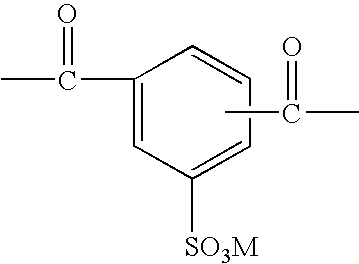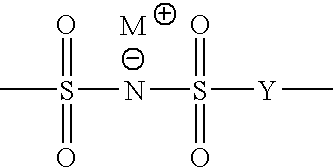Fuser-oil sorbent electrophotographic toner receiver layer
a technology of electrophotographic printing and fuser-oil, which is applied in the field of paper for electrophotographic printing, can solve the problems of insufficient high image quality, difficult transfer of particles onto plain paper, and drastic changes in the forces holding particles to the photoconductor, so as to achieve the effect of minimizing the residual surface fuser-oil, high gloss, and differential gloss
- Summary
- Abstract
- Description
- Claims
- Application Information
AI Technical Summary
Benefits of technology
Problems solved by technology
Method used
Image
Examples
examples
[0104]The polyester binder used in the following examples was a polyester ionomer, AQ55, purchased from Eastman Chemical Company. Kaogloss 90, kaolin clay was obtained from Theile Kaolin Company as a 70 wt. % dispersion in water. Aerosol® OT, dioctyl sodium sulfosuccinate, an anionic surfactant from Cytec Industries was used as the coating surfactant for the toner receiver layers coated from water. Styrene butylmethacrylate (SBM) copolymer was obtained from Scientific Polymer Products, Inc. Kao C, a bisphenol type polyester resin was obtained from Kao Corporation. Pliolite AC80-H, a styrene-acrylate copolymer was obtained from Eliokem Inc. Cloisite 15A, clay used in the toner receiver layers coated from solvent was obtained from Southern Clay Products, Inc. Polymeric matte particles were prepared using standard suspension polymerization methods.
[0105]A polyethylene resin melt containing 11.4 wt % TiO2, 87.7 wt % LDPE, and 0.9 wt % of a mixture of colorants, optical brighteners and a...
examples 1-6
Preparation of the Electrophotographic Toner Receiver Layer (TRL)
[0106]A 32 weight percent aqueous solution of a mixture of AQ 55 and Kaogloss 90 in a the weight ratio specified in the Table 1 was coated on a corona discharge-treated, polyethylene resin coated paper described above to yield a dry coverage of 10.76 g / m2 coating of AQ55.
[0107]Similar receiver sheets in accordance with the invention were prepared by substantially the same procedure and with the different toner receiver component weight ratio as appropriate.
[0108]TRLs based on binders not dispersible in water were coated out of a 11-25 wt % solution of the binder and clay dispersed in ethylacetate or a 50 wt. % mixture of methyl ethyl ketone in toluene to yield a dry coverage of 9.15-10.76 g / m2 coating of binder.
[0109]Control coatings that did not include the clay were also prepared. Also included as a control for gloss measurements were 2 commercial clay coated papers, Lustro Laser (120 gsm), manufactured by Sappi, and...
examples 7-18
[0115]In this example set, polymeric matte particles were incorporated into the TRL to improve pencil writability. A stock solution for the toner receiver layer was prepared comprising 25 wt % AQ55 polyester, 7.5 wt % KaoGloss 90 and 0.05 wt % Aerosol OT. To samples of this stock solution, various polymeric matte particles were added as indicated in Table 2. The solutions were coated onto the polyethylene resin coated paper support described above and dried. The final dry coverage of the AQ55 polyester was 11 g / m2 and the KaoGloss 90 was 3.3 g / m2. The amount of matte added to coating solution was such as to achieve the dry coverage of the mattes as indicated in Table 2.
[0116]After coating and drying, sheets of the coated TRL were imaged in the NexPress 2100 press. The level of pencil writability was determined by writing onto the imaged layer using a #2 pencil. The level was visually assessed on a scale of 1 to 5, 1=fair / just visible, 5=excellent.
[0117]
TABLE 2AverageExam-MatteDryPen...
PUM
| Property | Measurement | Unit |
|---|---|---|
| glass transition temperature | aaaaa | aaaaa |
| glass transition temperature | aaaaa | aaaaa |
| weight percent | aaaaa | aaaaa |
Abstract
Description
Claims
Application Information
 Login to View More
Login to View More - R&D
- Intellectual Property
- Life Sciences
- Materials
- Tech Scout
- Unparalleled Data Quality
- Higher Quality Content
- 60% Fewer Hallucinations
Browse by: Latest US Patents, China's latest patents, Technical Efficacy Thesaurus, Application Domain, Technology Topic, Popular Technical Reports.
© 2025 PatSnap. All rights reserved.Legal|Privacy policy|Modern Slavery Act Transparency Statement|Sitemap|About US| Contact US: help@patsnap.com



